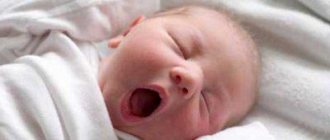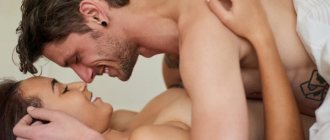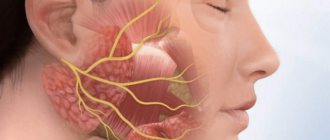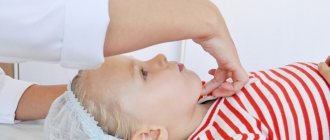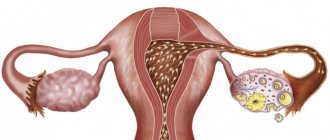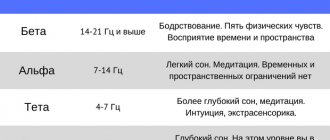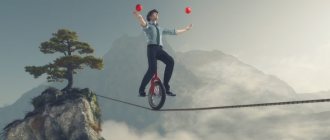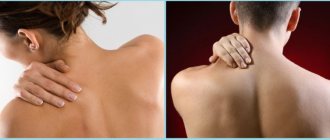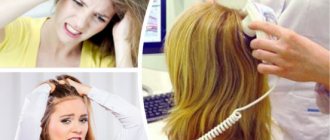Current issues in the treatment of migraine
Migraine is a chronic disease that disrupts the usual pattern of life and affects performance and family relationships.
In most cases, migraine attacks occur spontaneously and their occurrence is unpredictable. This creates a feeling of fear and apprehension in many patients and, accordingly, disrupts daily functioning. That is why WHO included migraine in the list of 19 chronic diseases that most disrupt the social adaptation of patients. At least a third of humanity suffers from migraines, with women suffering 2-3 times more often than men. A characteristic symptom of migraine headache is its onset before the age of 20 years. The essence of the disease is the periodic appearance of stereotypical attacks of throbbing pain, usually one-sided, which is accompanied by nausea, sometimes vomiting, poor tolerance of bright light, loud sounds, drowsiness, and lethargy after the attack is over. Characterized by recurrence of attacks and hereditary predisposition.
A migraine attack occurs in several phases: prodromal, aura, headache with associated symptoms, and postdromal. The prodromal period occurs before a migraine attack, ranging from a few hours to 2 days. Its typical symptoms include irritability, physical and mental hyperactivity, increased sensitivity to light, sounds, irresistible food cravings, increased bowel and bladder function, thirst, a feeling of detachment, lethargy, feeling tired, difficulty focusing vision, yawning or excessive sleepiness, slurred speech, impaired concentration, general weakness, anorexia.
The Aypa or pain phase of the attack begins after the prodromal period ends. Characterized by a gradual increase in pain and its one-sided nature. In this case, the side of pain can change even during one attack. Pain occurs in the area of the inner eye, postorbital or frontotemporal zone, is initially dull, then can become throbbing (increasing with each pulse beat). In most cases, migraine pain is very severe, lasting from 4 to 72 hours. There is historical evidence of severe intensity of migraine pain.
There are ancient legends about migraines. Even the almighty Zeus, according to one of them, had to turn to Hephaestus, the god of blacksmithing, so that he would smash his head, which was splitting from unbearable pain, with a hammer and relieve him of the monstrous migraine torment. There is also a literary example indicating a significant intensity of migraine pain. Mikhail Bulgakov in “The Master and Margarita” gave an accurate description of “a terrible, invincible disease - hemicrania, in which half the head hurts.” The procurator of Judea, Pontius Pilate, overcome by a migraine attack, saw salvation only in a portion of poison. Over the millennia, humanity has invented other ways to relieve pain, but the symptoms of the disease remain the same. Many patients in the pain phase experience a variety of symptoms such as increased sensitivity to bright light, loud sounds, and various odors.
As the migraine attack subsides, many patients experience a postdromal period, during which they experience difficulty concentrating, weakness, depression, loss of energy, poor coordination of movements, and drowsiness. The duration of this period is from several hours to two days. Migraine attacks are very diverse in severity, duration, and severity of accompanying symptoms both in different patients and in one patient. The disease is divided into two main forms: migraine without aura (MWA) and migraine with aura (MA). MBA is observed in 80% of all migraine cases. MA occurs much less frequently, in 5-10% of patients. Aura is a disorder characterized by recurrent episodes of reversible focal neurological symptoms that worsen over 5 to 20 minutes and last no more than 60 minutes. Frequent types of aura (visual, sensitive and speech) are defined as its typical forms. Visual disturbances are the most common symptom of aura, occurring in 99% of patients with MA in most attacks. Sensitive aura is observed in 30-54% of patients with MA, speech aura - in 20-32% of patients. The most typical manifestation of a visual aura is a flickering scotoma, when the image in some parts of the visual field periodically disappears, creating a sensation of flickering. A scintillating scotoma usually begins as a small blind spot in the center of the visual field that enlarges and moves. The patient may also see flashes of lightning and flickering, some see castles in the air and other interesting objects. Usually such symptoms last 20-30 minutes. Rare types of aura include olfactory, auditory, motor, aura in the form of systemic dizziness, as well as an aura with impaired neuropsychic functions. The differential diagnosis takes into account the characteristic signs of migraine. In addition to the above, there may also be: increased pain from ordinary physical activity, for example, when walking, climbing stairs; typical provoking factors: stress, weather changes, hunger, excess or insufficient sleep, alcohol intake (red wine, beer, champagne), stuffiness and menstruation; cessation of attacks in the third trimester of pregnancy. The treatment of migraine is guided by the following basic principles: 1. depending on the frequency of paroxysms - stopping attacks or preventing them; 2. taking into account the important importance of hypoxia and oxidative stress in the pathogenesis of the disease, periodic courses of antihypoxants and antioxidants. Treatment of attacks can be divided into nonspecific and specific. Nonspecific treatment involves the use of drugs that are used to treat pain of any origin and location. Specific are drugs aimed against purely migraine pain. How to relieve a painful migraine attack? Previously, people tightly bandaged their heads with a piece of linen with the names of the gods, since the disease was considered “heavenly punishment.” But the alleviating effect was most likely due to the tight bandage compressing the brain vessels. We find a similar “recipe” in Shakespeare: Desdemona eases Othello’s headache by bandaging his head with her handkerchief.
To relieve migraine attacks, drugs with a nonspecific mechanism of action are used:
- non-steroidal anti-inflammatory drugs;
- triptans are selective agonists (stimulants) of serotonin receptors;
- antiemetics (metoclopramide, domperidone, etc.).
The choice of a specific drug is the doctor’s task, taking into account previous treatment experience and patient preferences.
It is recommended to take painkillers simultaneously, or even better, 20 minutes after using antiemetics, which improve intestinal motility, accelerate gastric emptying and absorption of the analgesic. Nonsteroidal anti-inflammatory drugs (NSAIDs) traditionally occupy a significant place in the treatment and prevention of most pain syndromes. The strategy for a migraine attack is based on the choice of an effective and fast-acting NSAID. Unfortunately, preventive treatment for migraine is rarely used in everyday clinical practice. At the same time, it has been proven that success in the fight against the disease is largely determined by early and active prevention of attacks. Antidepressants may be used to treat migraines. Considering the important role of hypoxia and oxidative stress in the pathogenesis of migraine, periodic courses of antihypoxants and antioxidants are recommended according to the generally accepted scheme. Carnitines are of particular interest in this regard. Drug treatment of migraine may not be enough, therefore, in the inter-attack period, non-drug therapy is offered (mountain climate, acupuncture, transcutaneous electrical neurostimulation, hypnosis, relaxation techniques of behavioral psychotherapy, autogenic training, phototherapy, dosed hypobaric hypoxia, ozone therapy, etc.). With concomitant tension in the pericranial muscles, soft manual techniques, massage of the collar area, and reflexology are relevant.
HOW TO EAT WITH A MIGRAINE
Scientists have concluded that dietary factors may be key in the development of migraines in children and adolescents. In adults, avoiding trigger foods reduces the frequency and severity of attacks by 20-50%.
What foods are the most dangerous for migraines?
These are primarily products containing nitrates, the amino acid tyramine, the food additive monosodium glutamate, histamine, caffeine, and simple caxapa. Nitrites are a common component in sausages; it gives them a delicate pink color, and in people with migraines it causes a sharp constriction of blood vessels in the brain. Tyramine, which gives expensive cheeses a deep aroma and special taste, quickly constricts and dilates blood vessels, and also causes a deficiency of serotonin in the body, and the lack of this hormone provokes migraine attacks. Tyramine is found in large quantities in beer, pickled herring, chicken liver, yeast, and citrus fruits. Drinking red wines containing ethanol, sulfites and tyramine also leads to vasospasm and dehydration. While serotonin is often deficient in migraine sufferers, the hormone histamine is found in excess and worsens headache attacks. Therefore, you should avoid eggplants, tomatoes, avocados, cheeses, sausages, beer, red wine and sauerkraut. Monosodium glutamate (E621) causes increased activity in certain areas of the brain, which also provokes an attack. Chocolate, beloved by many, is also unsafe. It contains three migraine provoking substances - phenylethylamine, caffeine and theobromine. Prohibited foods for migraines: aged cheeses (brie, Roquefort, cheddar), cream, sour cream; chocolate, cocoa; meat and fish (smoked, dried, fatty), red caviar; offal; apples, bananas, citrus fruits, pineapples; corn, garlic, onion, sauerkraut, horseradish, radish; caffeinated drinks (coffee, tea, cola); alcohol (red wine, beer). After a diagnosis of migraine is established, the patient should determine his own list of foods that cause headaches. To do this, it is important to completely exclude foods from the “black” list from your diet for two weeks. Then enter them into the menu one at a time and observe your condition. Typically, junk food causes headaches 3-6 hours after consumption. The list of individual dietary triggers may change several times throughout life. But women should be especially attentive to their diet - their personal triggers often vary even within a month. People with migraines should not skip meals, eat dry snacks, or even go hungry. During attacks, it is necessary to limit the consumption of starchy foods (semolina, pasta, white bread), which cause the release of insulin, which provokes a migraine attack. And one more important rule: people suffering from migraines should not eat ice cream or drink cold drinks in hot weather, as the brain reacts painfully to temperature changes.
What should you eat if you have a migraine?
Scientists have discovered that foods rich in magnesium, calcium, vitamins A, B, C, and fiber for migraines are considered not just healthy, but healing.
Fish containing omega-3 fatty acids (cod, salmon, mackerel, etc.) helps prevent attacks. Of vegetable fats, unrefined flaxseed, olive and soybean oils are preferred. The spice ginger is known as a natural remedy for migraines. It has been proven that even slight dehydration provokes migraine attacks. The optimal amount of fluid consumed is at least 2 liters per day. So, foods that are good for migraines: rice (especially brown), oatmeal, buckwheat, poultry, sea fish, bran bread, wholemeal bread, feta cheese, cream cheese, sweet cottage cheese, low-fat milk, pear, cherry, cranberry, broccoli, spinach, chard, cauliflower, cucumbers, sweet potatoes, carrots, zucchini, beets, pumpkin, turnips, dried fruits, walnuts, vegetable oils (corn, olive, flaxseed, soybean). How to quickly relieve migraine pain with medications? All adult patients with migraine should be given recommendations for medication management of the attack. All patients with migraine should be treated with a stepwise approach, which involves managing three attacks at each stage before the patient moves on to the next stage. In the first stage, a nonsteroidal anti-inflammatory drug (NSAID) is used, plus, if necessary, an antiemetic. The drug of choice, especially in children, is ibuprofen. Ibuprofen is included in the international recommendations of the European Federation of Neurological Societies (EFNS) for the relief of migraine attacks (evidence level A). At the second stage, if possible and there are no contraindications, then triptans are recommended for patients who failed to help at the first stage. NSAIDs may be an effective alternative to triptans when migraine relapses. In addition to traditional tablets, which begin to act after 40 minutes, and the maximum effect occurs after 2 hours, pharmacies offer Ibuprofen CAPS
, an ultra-fast-acting drug in capsule form.
Ibuprofen CAPS, soft gelatin capsules, contain a solution of ibuprofen in polyethylene glycol. One capsule of the drug contains 200 mg of ibuprofen. One of the main advantages of Ibuprofen CAPS is the rapid onset of pain relief, which begins 15 minutes after administration. And with migraines, it is especially important to quickly relieve pain. Ibuprofen CAPS is used for headaches, toothaches, migraines, painful menstruation, neuralgia, back pain, muscle and rheumatic pain. Ibuprofen CAPS also has an antipyretic effect; a decrease in temperature during fever begins 30 minutes after administration. It also relieves cold and flu symptoms. Ibuprofen CAPS is taken in adults and children over 12 years of age, 1 or 2 capsules up to three times a day as needed, maintaining an interval of at least 4 hours between doses. If you need to take the drug for more than 10 days, or if symptoms persist or worsen, you should stop treatment and consult a doctor. Ibuprofen CAPS is completely equivalent and interchangeable with the capsules of the original drug BEFORE USING THE MEDICINE, READ THE INSTRUCTIONS Apr 21, 2021
Previous News Feed Next
Risk factors
Statistics show that most often women of reproductive age from 15 to 45 years suffer from migraine attacks. The most dangerous age in this sense is from 35 to 40 years. Among men, only 6% of the country's total population suffer from the disease.
The mechanism of attack development has been sufficiently studied, but the exact causes of migraine are unknown. The main predisposing factor is heredity. If you carefully collect your family history, it turns out that there were already people in your family with such attacks. As a rule, women and men of the same kind are affected, and the degree of relationship may be different. The disease can develop both in direct relatives - sisters or daughters, and in granddaughters, cousins and second cousins. The pathological gene is transmitted through the maternal line. This is confirmed by statistical data: if the mother has seizures, then the probability of the disease in the child reaches 90%, and if the father has seizures, then only 20%.
If a patient experiences a headache, and there is no mention of such patients in the family history, then with a high degree of probability it is a tension headache or other diseases.
How does an attack proceed?
A classic attack goes through 4 phases in its development: prodromal phase, aura, painful attack and recovery. Some people have all phases, others only some of them.
The prodromal phase is the precursors. About a day before the onset of an attack, a person begins to have a keen sense of smell, he is drawn to sweets, his mood changes, he wants to constantly yawn, and he is bothered by fatigue and weakness. Not everyone feels these signs; many do not have time to pay attention to them.
The aura lasts from 5 minutes to several days. Doctors divide aura into positive and negative. Positive – a person sees or feels something that is objectively not there. This can be bright light at the edges of the visual field, sparkling geometric shapes, most often zigzags, stars, stripes, spirals. They enlarge and fill the entire field of view. People may see pulsating lines around objects and may experience double vision or a feeling of blindness in one eye.
The aura is called negative if part of the visual field falls out. A black spot appears in the center or edges, sometimes it replaces the lateral fields of vision.
At the same time, some people experience neurological disorders in the form of numbness, “crawling”, and tingling on the side of pain. Unpleasant sensations begin in the hand and spread to the head and half of the tongue. There is weakness (paresis) in an arm or leg. It becomes difficult to speak, words are not remembered, it is difficult to express your thoughts.
Next comes the pain phase, during which the head throbs, the slightest rustle or light worsens the condition. The patients are pale, many feel nauseous, and vomiting does not bring relief. Some people want food rich in carbohydrates at this time - buns, potatoes, others cannot even swallow water. Many describe the condition as “your head is about to explode.” Your neck and shoulders may hurt. The torment sometimes lasts up to 3 days.
For some, the pain attack ends on its own, and for others after massive administration of medications. After the pain ends, a sound sleep most often follows.
Recovery from an attack occurs in different ways. At first, almost everyone experiences an increase in the amount of urine they produce, and then some feel exhausted for about a day, while others feel a surge of strength.
The purpose of massage and its effectiveness
If you have a headache, then self-massage solves the main problem - it either completely eliminates the migraine or weakens it.
As a rule, the vast majority of reasons for the appearance of this condition lie in tension in the muscles of the neck and head. Because of this, actions aimed at relaxing the muscles help achieve the desired pain-relieving effect.
When the pain bothers you for a long time, you need to consult a doctor, as the cause may be the development of some pathology.
Migraine massage has the following effects:
- Reduces clinical manifestations of neurosis and improves sleep.
- Allows you to get rid of hemicrania, which is chronic pain in one part of the head.
- Improves blood circulation in the skin and metabolism in nerve fibers.
- Improves memory and increases performance.
There are many massage techniques to help relieve pain. Some have a long-distance effect, whereby the effect occurs in one area and the effect appears in another. For example, a targeted effect on the limbs leads to a weakening of the signs of pathology.
Unfortunately, migraine is a chronic condition, so the patient will require frequent treatments. In addition to massage, you can also use individually selected gymnastics, the purpose of which is to normalize blood circulation.
Self-performing acupressure massage
It is not necessary to influence absolutely all the points listed below. It is enough to choose those that really have a positive effect on headaches. The points that help get rid of it, which you can massage yourself if necessary, are listed below:
- The entry point into the zhe-gu valley is on the characteristic bulge between the thumb and the next one.
- The Feng Chi gate of consciousness is under the skull above the spine.
- The third eye yin-tang point is on the border of the bridge of the nose and the frontal bones between the eyebrows.
- Feng Chu wind lock - above the spine.
Massaging the last of these points for migraines is prohibited during pregnancy, because manipulation often provokes contractions. During labor, massaging will be more useful, since the effect relieves the pain that occurs during contractions.
The impact on the points has another name - acupressure. To carry out this procedure, other points may be required, but they are located throughout the body. For example:
- 1 – on the forearm approximately three fingers above the wrist. To apply the effect, a person suffering from migraine needs to sit down and place his hand palm down, then apply it alternately on both hands;
- 2 – in the temporal region at the border with the scalp. To carry out the procedure, the person should be seated so that the elbows are on a hard surface and the head rests on them. This point is symmetrical and will need to be massaged in the same way as in the previous version;
- 3 – in the outer corner of the eye. The position of the person experiencing the headache and the massage should be consistent with the previous variation;
- 4 – under the zygomatic arch at the base of the ear, manipulation is carried out as for point 2;
- 5 – at the end of the eyebrow, the area should be worked on both sides and at the same time;
- 6 – from the corner of the eye three centimeters to the nose. Manipulations are carried out similarly to massage of point 2;
- 7 – on the back of the hand between the second and third metacarpal bones;
- 8 – you can find this area when bending your arm near the elbow, namely at the end of the fold. To do this, you need to sit down with your hand palm down. Massage alternately;
- 9 – on the foot three millimeters from the big toe nail towards the second. They massage it at the same time;
- 10 – on the shin four fingers above the ankle. They also massage at the same time;
- 11 – on the back of the foot, approximately between the second and third toes, but massage it alternately;
- 12 – on the second toe three millimeters from the nail, the pattern is similar;
- 13 – on the back of the leg between the fourth and fifth metatarsal bones, also overnight;
- 14 – on the bridge of the nose above the sixth point, massage in the same way as in the previous version;
- 15 – on the foot three millimeters from the corner of the nail on the little finger, act alternately;
- 16 – under the inner side of the ankle, but massage in turn;
- 17 - on the temple, but to find it you will need to bend your ear forward.
All of the above acupuncture points for migraine and pressure are symmetrical, the following are single points:
- 18 – on the stomach two fingers below the navel. To do this, the patient must lie down and relax;
- 19 - on the stomach eight fingers above the level of the navel, approximately above point 16. Manipulations with this area should be carried out similarly to the previous option
But this knowledge is not enough; to treat migraine you will need to take into account the nuances listed below.
Massage of 15, 16 and 18 points turns out to be only tonic movements. With it, manipulations involve rotation and pressure, and each of these areas needs to be worked on for a minute. All other areas are stroked and massaged with gentle rotation for four minutes.
To eliminate pain with acupressure, not all of the listed points will be needed. It will be enough to use those that have the maximum positive effect.
Features of classic massage
The ability to manually influence the head can be mastered in literally one consultation with a doctor, but only on condition that the patient carefully listened to all the recommendations. During pregnancy, when the use of many medications is contraindicated, this massage will be the only safe way to relieve pain. In addition, a person will not need to take off his clothes to carry it out.
Massage sessions are carried out not only in the presence of pain, but also for prevention, and the schedule and frequency of procedures should be chosen together with a neurologist, since they are prescribed in accordance with the cause of pain.
Massage for migraines at home is the following sequence of actions. First, the entire working area is stroked, starting from the forehead, ending with the neck-collar area and shoulders.
After this, they move on to rubbing, which works on the back of the head, the area behind the ears, temples and forehead. Then kneading is carried out in a similar sequence, the actions are more intense in the degree of pressure, deep, but slow. After working on the back of your head, you need to lie down and place two fingers on your temples, and then perform circular movements ten times.
Then they move on to finger tapping, which is called vibration. If the latter causes discomfort, it can be replaced by combing your hair with a wooden brush.
Acupuncture
Acupuncture is a technique for getting rid of pain in the head; this method is distinguished by the use of needles. Not so long ago, doctors were skeptical about the technique that came from the east, but thanks to research it was possible to prove that acupuncture really allows you to forget about obsessive pain.
The needles for this procedure are very thin and they are inserted into biologically active areas, relieving pain in the head of varying intensity.
Acupuncture causes the release of chemical compounds in the human brain that provide signals to the immune system. Using this technique, you can achieve the disappearance of pain in the head, neck and shoulders. In addition, acupuncture can prevent vascular spasms that occur due to poor lifestyle or constant stress. Moreover, remission from acupuncture lasts several months.
But, despite the positive effects of acupuncture, you cannot do it yourself, since there is a high risk of hitting the wrong spot, which will lead to a worsening of the condition.
Another important fact is maintaining sterility. Otherwise, inflammation occurs at the site where the thin needle was inserted and, even worse, infection can penetrate into a small wound and lead to serious consequences.
It is possible to remove a headache on your own and even at home, but this will require knowledge of the technique of the procedure. This is the only method that differs from others in safety and effectiveness, which is very important if there are contraindications to the use of medications. A much greater effect can be achieved using acupressure for migraines. But to carry out this complex procedure, you should first consult with a specialist, since an incorrectly chosen point can lead to a worsening of the migraine situation.
